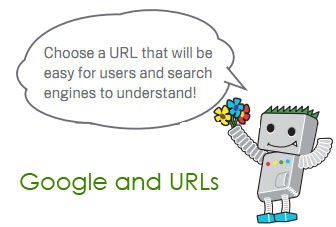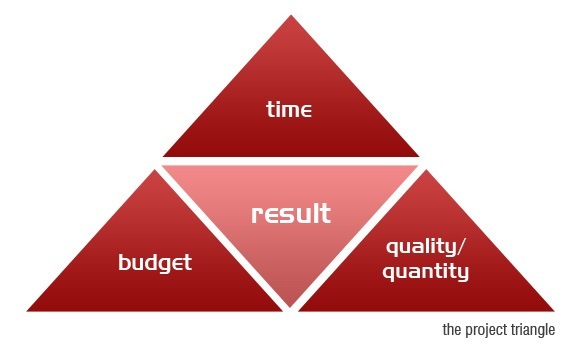When you come across any blog, it is more likely that they would have covered very few articles on the structure of URL’s and what are the best practices to get optimal results and make it a lucrative feature in your SEO efforts. Thus, we thought it is time to explore and bring forth some of the common, but mostly avoided elements of a winning URL.
Regardless of the whole article dedicated to it, URL’s do not play a crucial role in your online marketing campaigns and you might not need to follow the practices for all the pages that you create, especially in the case of eCommerce stores where there could be thousands of URLs.
It is not like you won’t get ranked on search engines for avoiding this element, however, your overall online marketing profile looks healthy if you include URL optimization into your campaign.
A healthy URL is just a means of making it easier for Google and other search engines to rank your website by understanding the context, of which URL holds a very small part.
#1: Combine the www and the non-www versions of the domain
Two major versions of your domain are indexed by the search engines, i.e. the www and the non-www versions. Both these versions could be combined in more than one way, however, we’d go with the popular practice.
Most online marketing experts will use the redirect (301) to point one of the versions of their site to the other. However, if you are not able to redirect, you could specify the preferred version on Google with the help of the webmaster’s tools. You could go on configuration >> settings >> preferred domain. By doing this, only Google will show your preferred domain. If you don’t have a root domain, you might want to skip this method.
When some of the backlink points towards the www version, and some towards the non-www version, you could establish the link between the two by using any of the methods given below:
1) With the help of 301 redirect
2) Google Webmasters Tools
3) Canonical tag

#2: Good Readability Score
Amongst all the technical aspects involved in the structure of the URL, one important aspect is the level of its readability by the users. The more readable it is for the users, the better for search engines. Accessibility is one of the major ranking factors where search engines make use of the advanced user and the data signals of their usage to determine what people engage with and whatnot.
The URL has to be clean, easily understandable, and compelling to those who are looking for relevant information.
#3: Avoid Dynamic & Relative URLs
The URL’s that are generated is dependent on the CMS, and sometimes its like the ones shown below:
www.xyz.com/topic
At times, it could get ugly like this one
www.xyz.com/?p=578544
It’s a good practice to go with a static URL that looks good, rather than the dynamic one that doesn’t give a clear idea about the topic. Static URLs are the ones that contain your keywords and are quite user friendly since one could figure out what the page is about by just looking at the URLs name.
Besides, Google strongly recommends using hyphens(-), and not underscores in the URL name, since the words connected by _ are considered as a single word by Google.
#4: Create an XML Sitemap
In simple terms, it is a list of the URLs that are contained in a website that you will be submitting to the search engines. It shouldn’t be mixed up with an HTML sitemap, as an XML sitemap is created for the search engines, while the HTML sitemap is created for human users.
This serves two purposes:
1) First, the search engines are able to find the pages of the sites quite easily.
2) Search engines could use the sitemap as the reference when selecting canonical URLs on the site.
So, the question arises what kind of pages should be included in the sitemap? Should it be all the pages of the sites or not? In fact, for SEO purposes, you should be including only the web pages that you’d like to show up on the search.
#5: Insert Keywords in the URL
This is inevitable. SEO is about targeting the right set of keywords, at the right places. Though not much of value, it is still vital when you see that it forms a small part of the overall ranking factors of Google.
First of all, the keyword in the URL gives a basic idea of what lies on the webpage is it is clicked on social media platforms, in an email message, or on hovering on the link to click.
Secondly, as the URLs get shared, copied, and pasted, it will work as an anchor text in case there is no anchor text used in a link. This again provides a strong input for the rankings.
There are numerous studies that will throw light upon the fact the URL is one of the most common elements considered by searchers before clicking through a search result. Thus, it is a thumbs up for the URLs showing up in the search results with the targeted keywords.
#6: Avoid Duplicate URLs
Ensure that you are avoiding duplicate URLs. Dynamic URL, when dynamically generate, tends to create duplicate URLs for the same content. Your website may be having www and non-www versions of your URL that points to the same content.
Most of the times, duplicate content is created unintentionally by the session ids, affiliate codes, and sorting options. There are two ways to cope with the duplicate URLs. One is to choose the best URL and a rel canonical tag to the other duplicate URLs. The other one is to add 301 redirects, that is most often in the case of redirecting multiple home page URLs.
This will cause less confusion and will also prevent the site from duplicate content penalties. URL cleaning and optimization for convenient indexing and navigation by search engines is a vital part of the on-site SEO. It is also worth spending time on the URLs for SEO and usability purpose.
Conclusion
It is important to clean and optimize the URL for easy navigation and indexing by the search engines for the success of your on-site SEO efforts. Try putting aside a little amount of your time and resources to optimize the URL to enhance the usability of the link and boost the SEO efforts.















